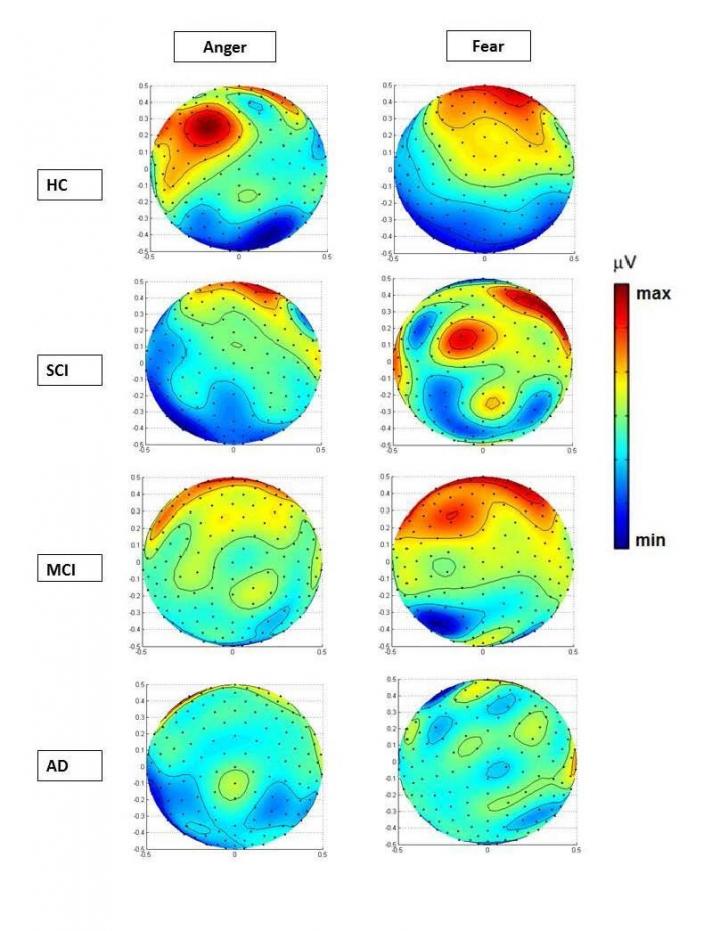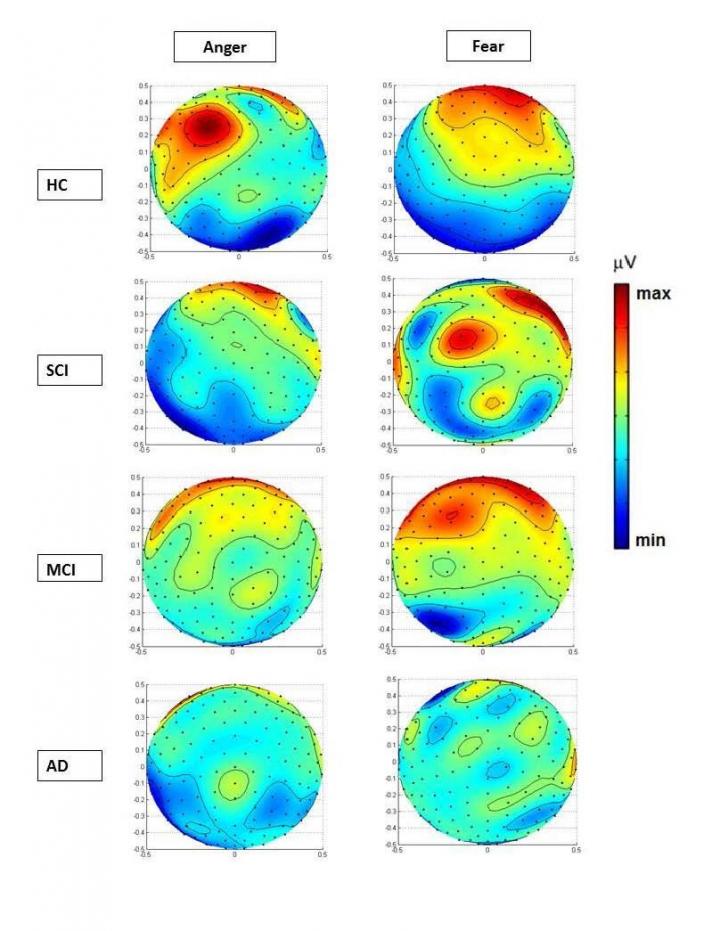
Credit: Centre for Research and Technology Hellas (CERTH)
Thessaloniki- Macedonia, Greece – September 14, 2018 – Greek researchers investigated whether specific brain regions, which have been found to be highly activated after negative facial stimulus, are also activated in different groups of people with subjective cognitive impairment (SCI), mild cognitive impairment (MCI) and Alzheimer's Disease (AD) compared to healthy controls (HC).
The endeavor to detect the very early signs of dementia with the possibility of developing interventions to slow its progression has provided the impetus for increased interest in SCI. In contrast to the literature available on elders with cognitive impairment, the body of evidence regarding emotional processing with brain maturation in SCI is still limited, almost absent especially where emotional processing is concerned. However, scientists from Centre for Research and Technology Hellas/Information Technologies Institute (CERTH/ITI), the Aristotle University of Thessaloniki (AUTH) and the Greek Association of Alzheimer's Disease and Related Disorders (GAADRD), examined the modulations of HC, people with SCI, MCI and AD on the N170 component during the explicit and implicit processing of negative facial stimulus ("Anger" and "Fear"). The face-selective N170 component characteristics were used to constrain brain localization, having in mind that a neurophysiologic marker evoked by facial stimuli will reflect differences in the intensity of responses in brain regions specifically devoted to the decoding of "Anger" or "Fear" faces. The focus of the study was to find any potential differences of brain activity as revealed by N170 amplitude and latency among the four groups in grounds of facial emotional processing, which is considered as an important cognitive function, commonly affected in people with cognitive impairment. Overall, 57 participants took part in the study, among them 14 SCI, 17 MCI, 14 AD and 12 HC. All participants went through a standard detailed neuropsychological assessment. The facial stimuli used in the experiment were chosen from Ekman and Friesen's facial stimuli. Female and male faces with facial expressions were used, displaying 17 "Angry" and 17 "Fearful" expressions. HD-EEG data were collected with the EGI 300 Geodesic EEG system (GES 300) using a 256-channel Hydro-Cel Geodesic Sensor Net (HCGSN).
Summarizing the main findings, SCI group compared to HC, had statistical significant larger amplitude to negative faces, while brain activation in frontocentral areas, during N170 elicitation was less than expected compared with HC. Similarly, MCI and AD group exhibited also larger N170 amplitudes while less brain activation, in the respective areas, was observed compared to HC. Supposing that facial processing acts as cue to trigger activation of stored configural representations and memory, the difference in SCI compared to HC may at least partly explain the impaired processing after presentation of negative faces. In contrast to HC, the SCI group exhibited enhanced N170 amplitude for "Fear" compared to the negative emotion of "Anger". N170 topographic maps differ between the two negative stimuli among the four groups, while less frontal brain activation was noticed in elders with cognitive deterioration compared to HC group (Figure 1). This outcome leads us to believe that cognitive impairment affects fronto-temporal and occipito-parietal areas, which take part in facial emotional processing. These findings pave the way to investigate the changes taking place in neural activation at cognitively impaired conditions associated with neuro-degenerative diseases such as SCI, as prodromal stage of cognitive impairment related to AD and demonstrate an interesting shifting of the location of maximum neural activation for the two negative emotions. More specifically, in the case of "Fear" the maximum intensity level appeared in frontal lobe in the most cognitively intact groups, whereas in groups with cognitive impairment less activity in frontal areas was found, showing that N170 component is generated by "top-down influences", arising from higher order regions of the cortex. Thus, identifying SCI by N170 modulation may facilitate the planning of future prevention and treatment of cognitive decline associated to pathological cognitive aging, and particular to the processes related to AD.
###
Media Contact
Diana Murray
[email protected]
718-640-5678
@IOSPress_STM
http://www.iospress.com
Related Journal Article
http://dx.doi.org/10.3233/JAD-180223





